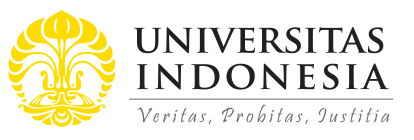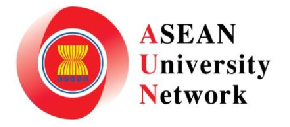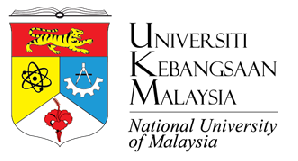
Abstract
The COVID-19 pandemic has had large-scale global effects across all segments of society, affecting large and diverse population cohorts in many ways. COVID-19 is not just a global health emergency but also a health-driven socioeconomic disaster. The prevalence of socioeconomic stressors that existed prior to the pandemic is exacerbated by the effects of the pandemic. The effects of COVID-19 vary across communities and are disproportionate on vulnerable groups. People with the least resources are most affected and are least able to recover. Contemporary thinking on development focuses on “bottom-up” approaches and “top-down” critique development. A key dimension of inclusiveness is about giving voice and power to excluded and vulnerable groups in development and recovery processes. Participation is a key ingredient in inclusive forms of development; it enables voice, representation, and capacity building to allow communities to address key societal challenges in line with their aspirations. This chapter argues that wide-scale community involvement is required for a sustainable recovery and resilience from COVID-19. It explores the benefits of participation in building long-term resilience and adaptive capacity. Participation is identified as a mechanism to enable ways to address power relations for vulnerable groups in COVID-19 recovery and curb the further deepening of global inequality.
References
Abrams, EM. & Szefler, SJ. (2020). COVID-19 and the impact of social determinants of health. The Lancet Respiratory Medicine, 8(7), 659-661. https://doi.org/10.1016/S2213-2600(20)30234-4
Adenipekun, O. (2020). COVID-19- A Review of Community Participation. Think Global Health. https://www.thinkglobalhealth.org/article/covid-19-review-community-participation
Alvaredo, F., Chancel, L., Piketty, T., & Zucman, G. (2019). World Inequality Report, 2018. Paris: World Inequality Lab.
Arnstein, S. R. (1969). A ladder of citizen participation. Journal of the American Institute of Planners, 35(4), 216-224. https://doi.org/10.1080/01944366908977225
Babacan, H., McHugh, J., & Dale, A. (2020). Cairns Local Covid-19 Rapid Social Needs Assessment. Cairns: James Cook University and Cairns Regional Council. https://www.cairns.qld.gov.au/__data/assets/pdf_file/0008/398204/CRC-Covid-Rapid-Social-Needs-v.5-22-Sept-2020.pdf
Babacan, H. (2020a). Women and economic dimensions of climate change in T. Chaiechi (ed.) Economic effects of natural disasters (pages 77-95). London: Elsevier Publishers.
Babacan, H., Gopalkrishnan, N., & Trad-Padhee, J. (2009). Achieving Structural Change: A Guide for Community Workers. Queensland: Center for Multicultural and Community Development, University of the Sunshine Coast.
Bergstrand, K., Mayer, B., Brumback, B., & Zhang, Y. (2015). Assessing the relationship between social vulnerability and community resilience to hazards. Social Indicators Research, 122(2), 391-409. https://doi.org/10.1007/s11205-014-0698-3
Bhadra, S., & Pulla, V. (2014). Community interventions in disasters, in K. Goel, V. Pulla, A.P. Francis (eds.), Community work: Theories, experiences and challenges (pages 103-117), Bangalore: Niruta Publications.
Blow, C. (April 5, 2020). Social distancing is a privilege, New York Times.
https://www.nytimes.com/2020/04/05/opinion/coronavirus-social-distancing
Blundell, R., Costa Dias, M., Joyce, R., & Xu, X. (2020). COVID-19 and inequalities. Fiscal Studies, 41(2), 291-319. https://doi.org/10.1111/1475-5890.12232
Boele, R., & Brodie, M. (2020). Protecting vulnerable people. Insights. Sydnye: KPMG Australia. https://home.kpmg/au/en/home/insights/2020/05/coronavirus-covid-19-protecting- vulnerable-people.html
Brown, K., & Westaway E. (2011). Agency, capacity, and resilience to environmental change: Lessons from human development, well-being, and disasters. Annual Review of Environment and Resources, 36, 321-342. https://doi.org/10.1146/annurev-environ-052610-092905
CDC. (2018). Social Vulnerability Index. Center for Disease Control and Prevention. https://svi.cdc.gov/index.html
Cheng, J. W., Mitomo, H., Otsuka, T., & Jeon, S. Y. (2015). The effect of ICT and mass media in post-disaster recovery: A two model case study of the Great East Japan earthquake. Telecommunications Policy, 39(6), 515-532. https://doi.org/10.1016/j.telpol. 2015.03.006
Cornwall, A. (2008). Unpacking participation: Models, meanings and practice. Community Development Journal, 43(3), 269-283. https://doi.org/10.1093/cdj/bsn010
Contreras, S. (2019). Using Arnstein’s Ladder as an Evaluative Framework for the Assessment of Participatory Work in Post disaster Haiti. Journal of the American Planning Association, 85(3), 219-235. https://doi.org/10.1080/01944363.2019.1618728
Cube Group. (2020). Delivering Public Value Through the Waves of the COVID-19 Crisis. Melbourne. https://cubegroup.com.au/wp-content/uploads/COVID-19-1.pdf
Dale, A., Vell, K., Potts, R., Voyce, B., Stevenson, B., Cottrel, A., King, D., Babacan, H., Boon, H., Gooch, M., & Pert, P. (2014). Applying Social Resilience Concepts and Indicators to Support Climate Adaptation in Tropical North Queensland, Australia: Benchmark Evidence Base. Cairns: James Cook University. https://www.cairnsinstitute.jcu.edu.au/ applying-social-resilience-concepts-and-indicators-to-support-climate-adaptation-in-tropical-north-queensland-australia-benchmark-evidence-base/
Dzigbede, K.D., Gehl, S.B., Willoughby, K. (2020). Disaster resiliency of U.S. local governments: Insights to strengthen local response and recovery from the COVID‐19 pandemic. Public Administration Review, 80(4), 634-643. https://doi.org/10.1111/ puar.13249
FOA. (2020). The State of Food Security and Nutrition, 2020. Food and Agriculture Organisation of the United Nations, IFAD, UNICEF, WFE & WHO. Rome.
Gaynor, S. T., & Wilson, M. E. (2020). Social vulnerability and equity: The disproportionate impact of COVID-19. Public Administration Review, 80 (5), 832-838. https://doi.org/10.1111/puar.13264
Ge, Y., Dou, W., Zhang, H. (2017). A new framework for understanding urban social vulnerability from a network perspective. Sustainability, 9(10), Article 1723. https://doi.org/10.3390/su9101723
Gibson, J., Hendricks, M. D., & Wells, J. C. (2019). From engagement to empowerment: how heritage professionals can incorporate participatory methods in disaster recovery to better serve socially vulnerable groups. International Journal of Heritage Studies, 25(6), 596-610. https://doi.org/10.1080/13527258.2018.1530291
Gopalkrishnan, N. (2005). Cultural Diversity and Civic Participation in Queensland. Brisbane: Department of Premier and Cabinet, Queensland Government.
Hogan, M., & Drew, C. (2020). Recovering From Covid-19 by Investing in People and Places, Brisbane: Australia Together. http://www.australiatogether.org/link
Hynes, W., Trump, B., Love, P., & Linkov, I. (2020). Bouncing forward: A resilience approach to dealing with COVID-19 and future systemic shocks. Environment Systems and Decisions, May 2020, 1-11. https://dx.doi.org/10.1007%2Fs10669-020-09776-x
IAPP. (2018). IAP2 Spectrum of Public Participation, International Association for Public Participation. https://iap2.org.au/wpcontent/uploads/2020/01/2018_IAP2_Spectrum.pdf
ILO. (2018). Women and Men in the Informal Economy: A Statistical Picture, 3rd ed. Geneva: International Labour Organisation.
ILO. (2020). COVID-19 and the World of Work. Geneva: International Labour Organisation
ITU, & UNESCO (2019). The State of Broadband: Broadband as a Foundation for Sustainable Development, International Telecommunication Union and United Nations Educational, Scientific and Cultural Organization. https://en.unesco.org/news/new-report-global-broadband-access-underscores-urgent-need-reach-half-world-still-unconnected
Johnson, B., & Andersen, A. D. (2012). Learning, Innovation and Inclusive Development: New perspectives on economic development strategy and development aid. Aalborg: Aalborg Universitetsforlag. (Globelics Thematic Report, Vol. 2011/2012).
Kenny, S., & Connors, P. (2019). Developing Communities for the Future, 6th ed. South Melbourne: Cengage Learning.
Kim, S. J., & Bostwick, W. (2020). Social Vulnerability and Racial Inequality in COVID-19 Deaths in Chicago. Health Education & Behavior, 47(4), 269-283.
Kulig, J.C., Edge, D. S., Townshend, I., Lightfoot, N., & Reimer, W. (2013). Community resiliency: Emerging theoretical insights. Journal of Community Psychology, 41(6), 758-775. https://psycnet.apa.org/doi/10.1002/jcop.21569
Luft, R. (2017). Beware of recovering the worst parts: Race, class and gender guidelines for a just recovery. Research Counts. Natural Hazards Centre. https://hazards.colorado.edu/news/ research-counts/beware-of-recovering-the-worst-parts-race-class-and-gender-guidelines-for-a-just-recovery
Manley, R. (2020). Light at the end of the tunnel: The capability approach in the aftermath of COVID-19. Journal of Human Development and Capabilities, 21(3), 287-292. https://doi.org/10.1080/19452829.2020.1787358
Martin-Howard, S., & Farmbry, K. (2020). Framing a needed discourse on health disparities and social inequities. Public Administration Review, 80(5), 839-844. https://doi.org/10.1111/puar.13265
Math, S. B., Nirmala, M. C., Moirangthem, S., & Kumar, N. C. (2015). Disaster management: Mental health perspective. Indian Journal of Psychological Medicine, 37(3), 261-271. https://dx.doi.org/10.4103%2F0253-7176.162915.
Maclean, K., Cuthill, M., & Ross, H. (2014). Six attributes of social resilience. Journal of Environmental Planning and Management, 57(1), 144-156. https://doi.org/10.1080/ 09640568.2013.763774
Marshall, A., Dezuanni, M., Babacan, H., Burgess, J., Crawford, F., Foth, M., Gregory, R., Mitchell, P., Neale, T., Rogers, S., Wallace, R., & Wockener, K. (2020). Northern Australia Communications Analysis: Investigating Digital Inclusion Infrastructure, Governance, Policy and Intervention. Collaborative Research Centre for Developing Northern Australia, Townsville.
Marston, C., Rendedo, A., & Miles, S. (2020). Community participation is crucial in a pandemic. Lancet, 395(10238), 1676-1678. https://doi.org/10.1016/S0140-6736(20)31054-0
Moon, M.J. (2020). Fighting COVID-19 with agility, transparency, and participation: Wicked policy problems and new governance challenges. Public Administration Review, 80(4), 651-656. https://doi.org/10.1111/puar.13214
Patel, J. A., Nielsen, F. B. H., Badiani, A. A., Assi, S., Unadkat, V. A., Patel, B., Ravindrane, R., & Wardle, H. (2020). Poverty, inequality and COVID-19: The forgotten vulnerable. Public Health,183, 110-111. https://dx.doi.org/10.1016%2Fj.puhe.2020.05.006
Payne, M. (2014). Modern Social Work Theory, 4th ed., London: Macmillan Science & Education.
Pedersen, M. J., & Favero, N. (2020). Social distancing during the COVID-19 pandemic: Who are the present and future noncompliers? Public Administration Review, 80(5), 805-814. https://doi.org/10.1111/puar.13240
PEW Research Centre (2020). Health concerns from COVID-19 much higher among Hispanics and Blacks than Whites. https://www.people-press.org/2020/04/14/health-concerns-from-covid-19-much-higher-among-hispanics-and-blacks-than-whites/
Sakurai, M., & Murayama, Y. (2019). Information technologies and disaster management: Benefits and issues. Progress in Disaster Science, 2, 1-4. https://doi.org/10.1016/ j.pdisas.2019.100012
Saxena, N. C. (1998). What is meant by people’s participation? Journal of Rural Development, 17(1), 111-113.
Serafini, G., Parmigiani, B., Amerio, A., Aguglia, A., Sher, L., & Amore, M. (2020). The psychological impact of COVID-19 on the mental health in the general population. QJM: An International Journal of Medicine, 113(8), 531-537. https://doi.org/10.1093/qjmed/ hcaa201
Shorrocks, A., Davies J., & Lluberas R. (2019). Global wealth 2019: The year in review, in Credit Suisse Research Institute (ed.). Zurich: Global Wealth Report, 2019.
Sinthumule, N. I., & Mudau, N. V. (2019). Participatory approach to flood disaster management in Thohoyandou. Journal of Disaster Risk Studies, 11(3), 1-7. http://dx.doi.org/10.4102/jamba.v11i3.711
Stiglitz, J. (2020). Conquering the great divide: The pandemic has laid bare deep divisions, but it’s not too late to change course. Finance and Development, September issue, 17-19.
Stoecker, R. (2014). Ladder of participation, in D. Coghlan & M. Brydon-Miller (Eds.), The Sage Encyclopedia of Action Research (pp. 489–490). London: Sage.
Taylor, J. (2015). Working with communities. South Melbourne: Oxford University Press.
Thomas, J., Barraket, J., Wilson, C., Ewing, S., MacDonald, T., Tucker, J., & Rennie, E. (2019). Measuring Australia’s Digital Divide: The Australian Digital Inclusion Index 2019. Melbourne: RMIT University.
Townsend, I., Awosoga, O., Kulig, J., & Fan, H. (2015). Social cohesion and resilience across communities that have experienced a disaster. Natural Hazards, 76, 913-938. https://doi.org/10.1007/s11069-014-1526-4
WHO. (2017). Tracking Universal Health Coverage: 2017 Global Monitoring Report. Geneva: World Health Organisation and the World Bank. https://www.who.int/ healthinfo/universal_health_coverage/report/2017/en/
WHO. (2020). WHO Director-General's opening remarks at the media briefing on COVID-19-11 March 2020, World Health Organization, Geneva. https://www.who.int/dg/ speeches/detail/who-director-general-s-opening-remarks-at-the-media-briefing-on-covid-19---11-march-2020
WHO. (2020a). The Impact of COVID-19 on Mental, Neurological and Substance Use Services: Results of a Rapid Assessment. Geneva: World Health Organization. https://www.who.int/publications/i/item/978924012455
Wisner. B., & Adams. J. (2002). Environmental Health in Emergencies and Disasters: A Practical Guide, World Health Organization. World Health Organization. https://apps.who.int/iris/handle/10665/42561
World Bank (2020). Poverty and Distributional Impacts of COVID-19: Potential Channels of Impact and Mitigating Policies. Manila: World Bank. https://www.worldbank.org/en/ topic/poverty/brief/poverty-and-distributional-impacts-of-covid-19-potential-channels-of-impact-and-mitigating-policies
World Bank (2020a). Global Economic Prospects, June 2020. https://www.worldbank.org/ en/publication/global-economic-prospects#overview
Worldometer (2020). Coronavirus Cases. https://www.worldometers.info/coronavirus/
UN. (2020). Inequality in a Rapidly Changing World. World Social Report 2020. New York: Department of Economic and Social Affairs, United Nations.
UN. (2020a). Education During COVID-19 and Beyond, Policy Brief. New York: United Nations.
UN. (2020b). COVID-19 and Human Rights: We Are all in This Together. New York: United Nations.
Van Gent, S. (2017). Beyond Buzzwords: What is “Inclusive Development”? Include Knowledge Platform on Inclusive Development Policies. https://includeplatform.net/wp-content/uploads/2017/09/Beyond-buzzwords.pdf
Yunus Centre (2020). Roadmap to Recovery and Regeneration. Brisbane: Griffith University https://www.griffith.edu.au/__data/assets/pdf_file/0022/1053364/RRR_Preview.pdf
Recommended Citation
Babacan, Hurriyet and Gopalkrishnan, Narayan
(2021).
COVID-19: Engaging the Most Vulnerable.
ASEAN Journal of Community Engagement, 5(1), 1-24.
Available at: https://doi.org/10.7454/ajce.v5i1.1114







